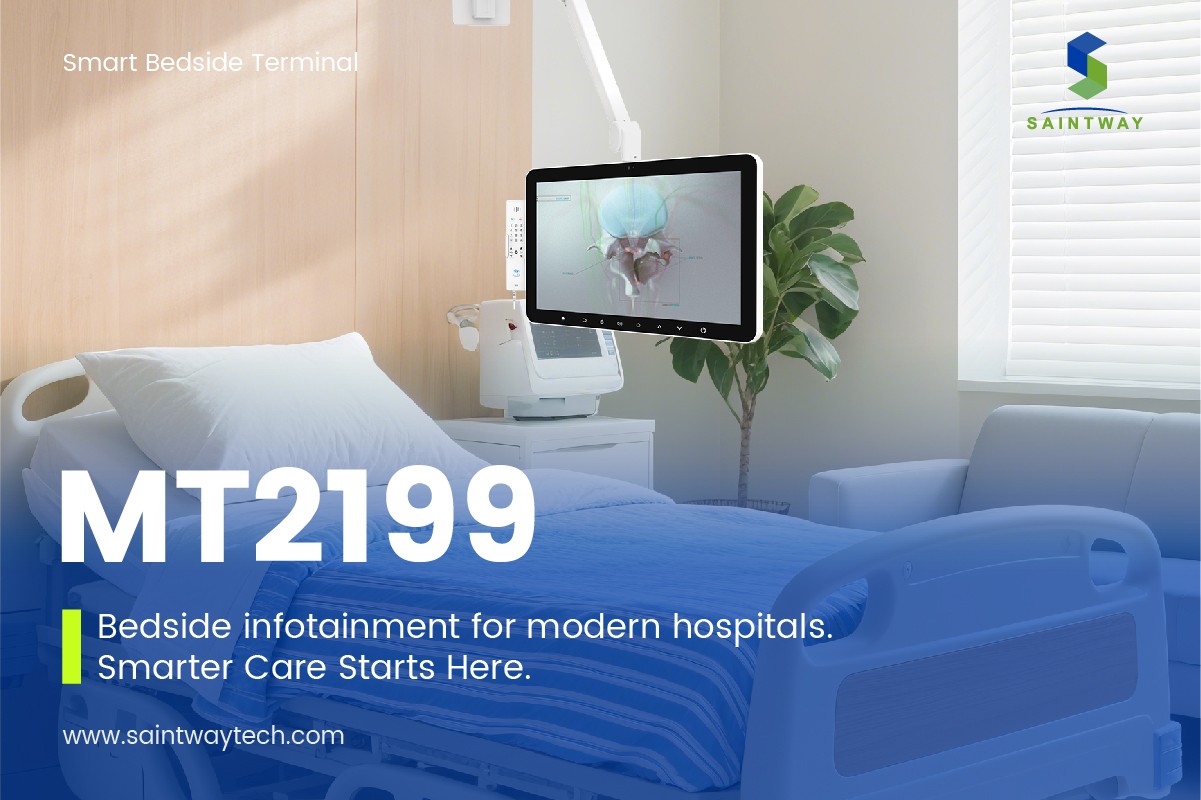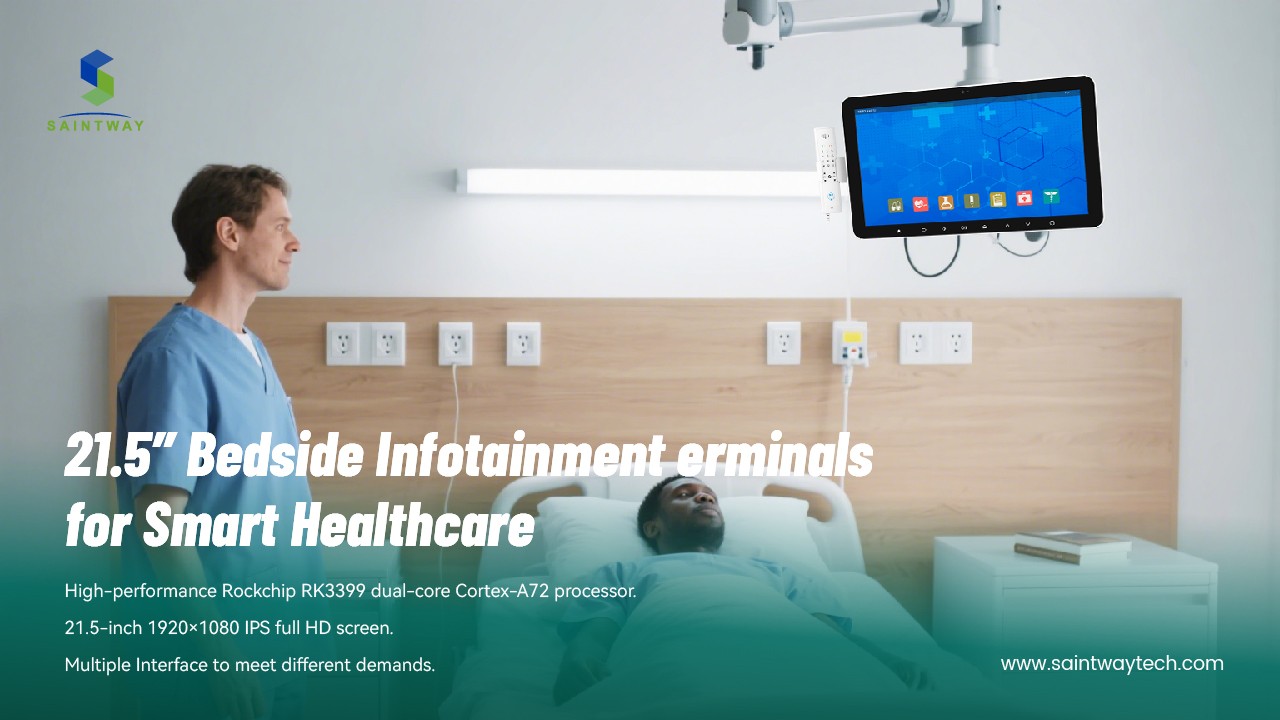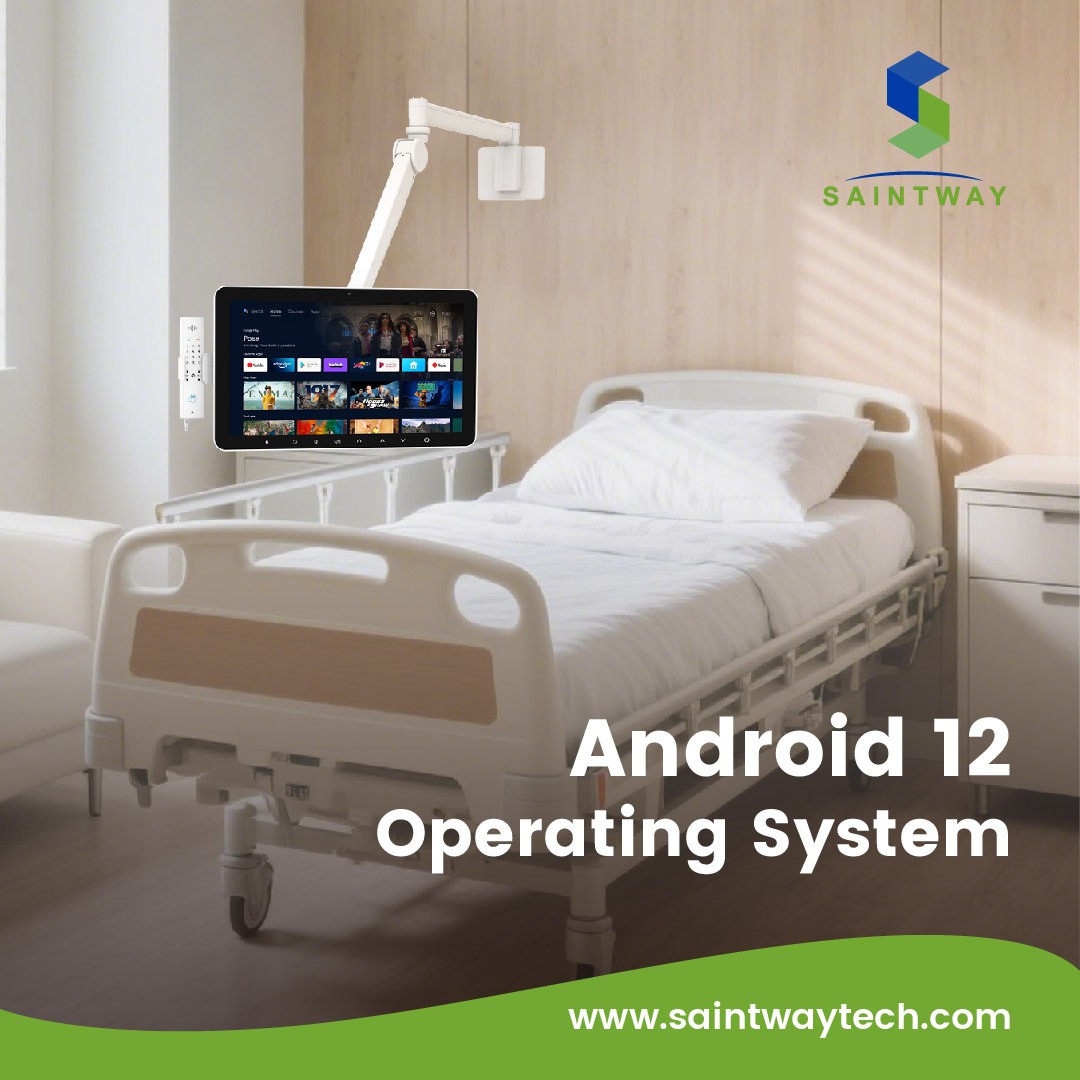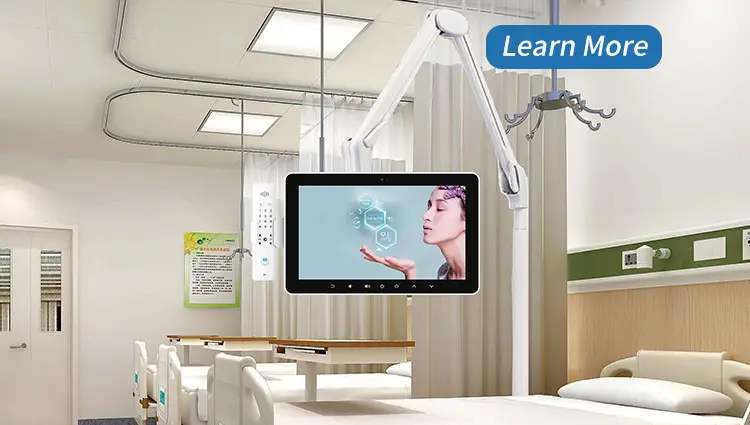I. Introduction
Bedside infotainment terminals represent a convergence of clinical functionality and patient amenities in hospital settings. These devices, typically mounted at the patient’s bedside, serve as multifunctional interfaces that deliver entertainment options, access to health information, and tools for direct communication with care teams. Evolving from rudimentary television remotes and nurse call buttons in the late 20th century, today’s terminals incorporate advanced touchscreens and software integrations that align with the demands of digital healthcare ecosystems.
This progression reflects broader shifts in hospital design toward patient-centered environments, where technology bridges gaps in information flow and engagement. For instance, early implementations focused on basic diversions like video streaming, but recent deployments emphasize seamless connectivity with electronic health records (EHRs) and real-time service requests. The core thesis of this article centers on the design principles underpinning these systems, their measurable impacts on clinical workflows and patient outcomes, and practical strategies for adoption in diverse healthcare facilities.

II. Core Components and Technical Architecture
At their foundation, bedside infotainment terminals rely on robust hardware tailored for the rigors of clinical use. Standard configurations include 16- to 22-inch LCD touchscreens with high-brightness displays for visibility in varied lighting, often encased in antimicrobial materials to mitigate infection risks. Mounting solutions—such as articulated arms or wall brackets—allow for ergonomic adjustments, accommodating patients with limited mobility. Connectivity is multifaceted: Power over Ethernet (PoE) for simplified cabling, Wi-Fi for wireless access, and Bluetooth for peripheral devices like headphones. Certifications like IEC 60601 ensure electrical safety and electromagnetic compatibility in medical contexts.
Software architecture forms the backbone, typically built on open platforms such as Android, Linux, or Windows to facilitate customization. User interfaces prioritize simplicity, featuring large icons, voice-guided navigation, and multilingual support for accessibility across demographics. Core modules include entertainment suites (streaming services, games, and on-demand videos), informational dashboards (hospital directories, meal ordering, and wayfinding), and clinical gateways (nurse call integration and vital signs displays).
Integration with backend systems is pivotal, employing standards like HL7 and FHIR for bidirectional data exchange with EHRs, hospital information systems (HIS), and picture archiving and communication systems (PACS). This enables secure, authenticated access to patient-specific data, such as lab results or medication schedules, directly from the terminal. Scalability is inherent: Modular designs support deployment from single-room pilots in community clinics to enterprise-wide networks in tertiary centers, with remote management tools for updates and monitoring.

III. Clinical and Patient-Centric Benefits
The therapeutic value of bedside infotainment terminals extends beyond diversion, directly influencing recovery trajectories and operational efficiencies. For patients, these systems foster autonomy by providing on-demand access to personalized content—ranging from educational videos on post-discharge care to interactive meal selections—which correlates with reduced anxiety and higher engagement in treatment plans. A study at Humber River Hospital involving 113 patients found that terminals enhanced self-care management and overall experience, with 92.58% of users accessing features at least once, particularly for medication information (40.16% usage rate). Elderly patients reported lower adoption due to usability hurdles, but overall satisfaction scores rose, underscoring the need for adaptive interfaces.
Clinically, terminals streamline workflows by digitizing routine interactions. Nurses benefit from fewer non-essential interruptions; one hospital integration yielded a 25% reduction in non-clinical calls, freeing staff for direct care. Real-time data pulls from EHRs minimize documentation errors and support evidence-based decisions at the point of care. Broader evidence from a randomized trial of 426 cardiac patients demonstrated that bedside portals—functionally akin to infotainment terminals—lowered 30-day readmissions from 13.5% to 5.5% and falls from 4.18 to 3.15 per 1,000 patient-days, particularly among those over 65.
From a holistic perspective, these devices elevate patient satisfaction metrics, often by 40% in deployed wards, while aligning with value-based care models. They empower families through shared access to care plans and virtual consultations, reducing discharge delays and readmission risks. For healthcare administrators, the return manifests in shorter lengths of stay and optimized resource allocation, as substantiated by qualitative data from provider surveys indicating no adverse workflow impacts.
IV. Implementation Strategies and Challenges
Deploying bedside infotainment terminals demands a phased approach to ensure alignment with institutional priorities. Begin with a comprehensive needs assessment: Survey stakeholders—patients, nurses, IT teams—to identify pain points like communication silos or low engagement scores. Vendor selection follows, prioritizing those offering HL7/FHIR compatibility and modular hardware; pilot programs in high-traffic units validate fit before scaling.
Integration testing is critical, involving simulated data flows between terminals, EHRs, and nurse call systems to preempt disruptions. Staff training—hands-on sessions and quick-reference guides—addresses adoption barriers, emphasizing features like service requests and security protocols. Budgeting should factor in upfront costs (hardware, software licensing) against long-term savings from efficiency gains.
Challenges abound, particularly in infection control: Opt for terminals with antimicrobial coatings and easy-clean surfaces to comply with hygiene standards. Data privacy looms large; HIPAA and GDPR adherence requires encrypted sessions, role-based access, and audit trails. Budget constraints in under-resourced facilities can be mitigated through phased rollouts or grants for digital health initiatives. Usability for diverse users—elderly, non-native speakers—necessitates iterative UX testing.
Case studies illuminate success: A unified platform rollout in a mid-sized hospital integrated terminals with existing HIS, yielding faster discharges and a 40% satisfaction uptick. Similarly, Canadian facilities leveraging bedside screens for video interpretation eliminated language barriers, slashing errors and boosting safety perceptions among non-English-speaking patients.

V. Future Directions and Innovations
Looking ahead, bedside infotainment terminals will deepen their role in hybrid care paradigms, propelled by AI and telehealth advancements. AI-driven personalization—analyzing patient data to curate content, predict needs, or flag anomalies—promises proactive interventions, such as virtual assistants guiding therapy adherence based on historical outcomes. Voice activation and natural language processing will enhance accessibility, reducing touch interactions for immunocompromised users.
Telehealth expansions will embed video rounds and remote consultations natively, fostering continuity post-discharge via linked wearables for real-time monitoring. Emerging integrations, like augmented reality (AR) overlays for physical therapy or IoT sensors for environmental controls, will transform terminals into holistic hubs. Interoperability standards will evolve, enabling seamless data sharing across ecosystems, while edge computing addresses latency in rural deployments.
Regulatory shifts, including expanded Medicare reimbursements for digital tools, will accelerate adoption. Facilities upgrading should prioritize vendors with AI roadmaps and pilot AI features to benchmark ROI.
VI. Conclusion
Bedside infotainment terminals stand as indispensable enablers of modern healthcare, weaving entertainment, information, and clinical precision into the fabric of patient care. By diminishing isolation, streamlining operations, and empowering informed decisions, they cultivate healing environments that prioritize human elements amid technological complexity.
Healthcare leaders must integrate these systems into capital planning, viewing them not as luxuries but as strategic imperatives for resilience and excellence. As evidence mounts—from reduced readmissions to amplified satisfaction—the path forward is clear: Invest in terminals that evolve with care demands, ensuring every bedside becomes a gateway to better health.

